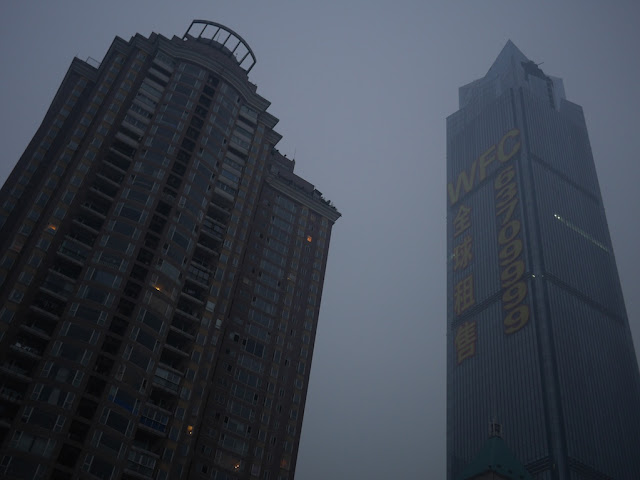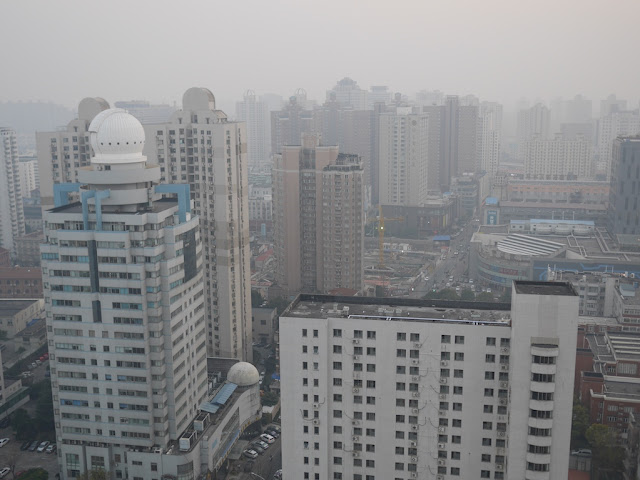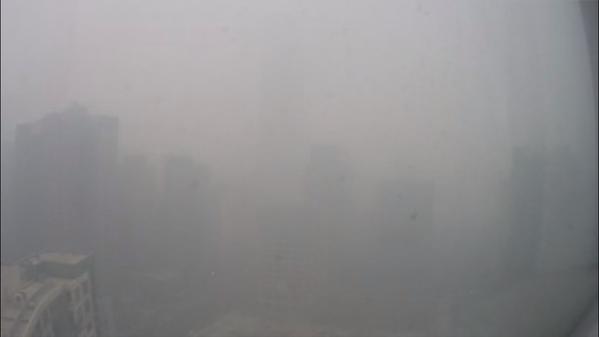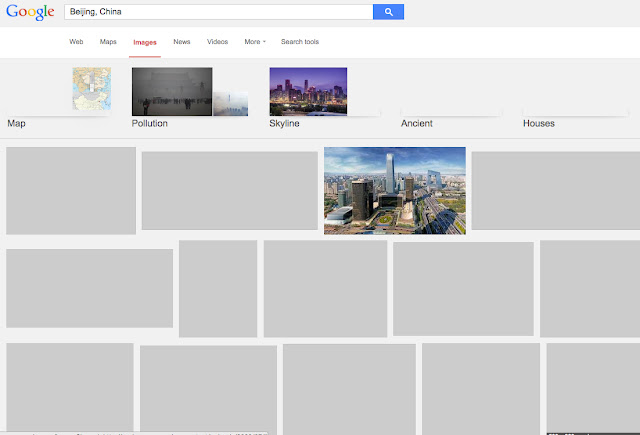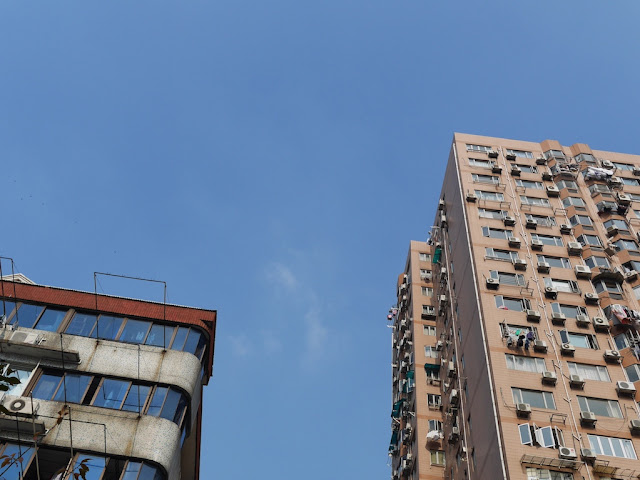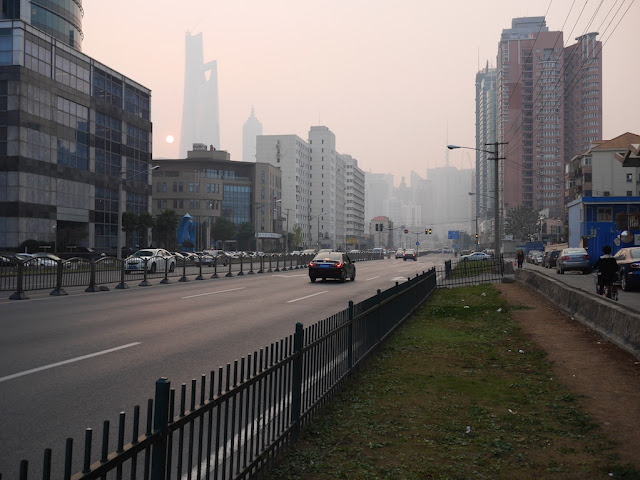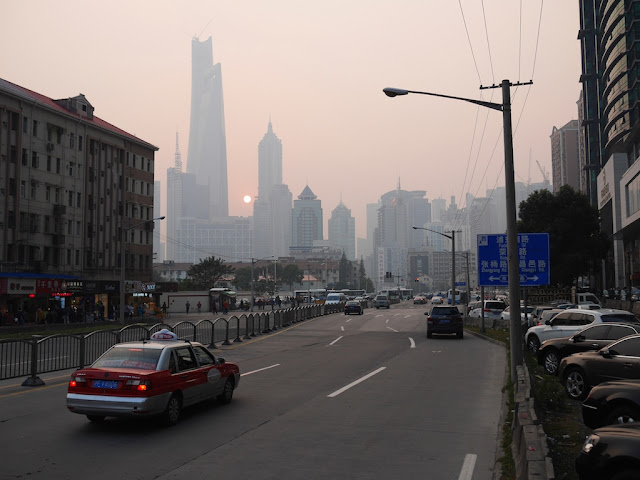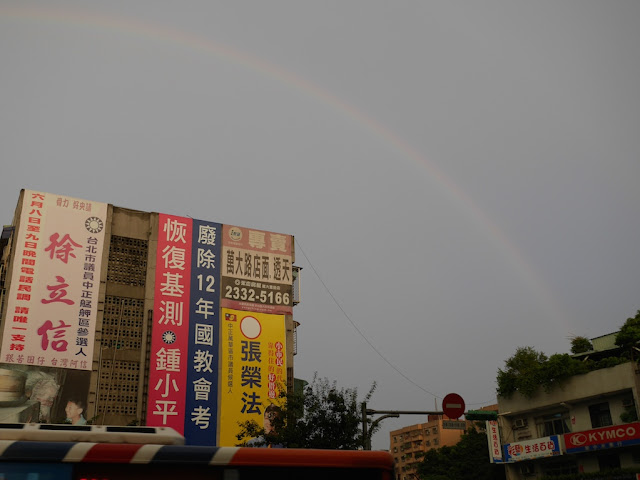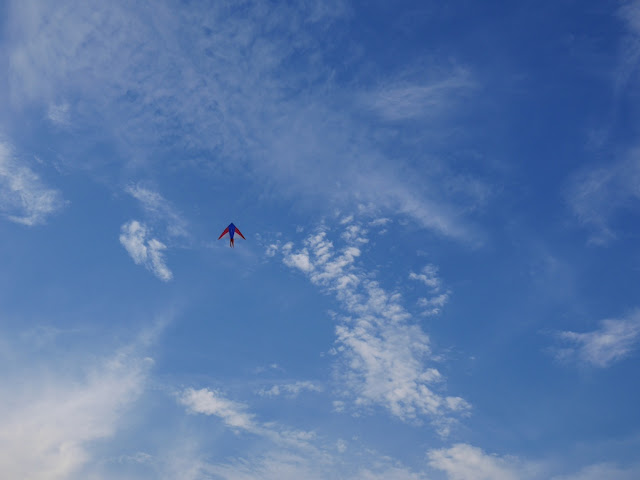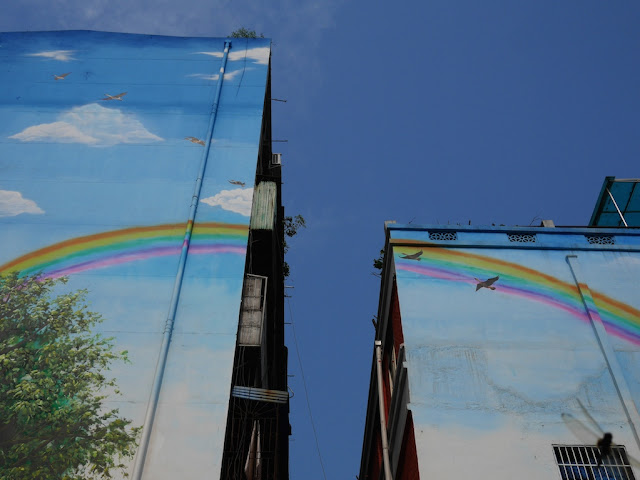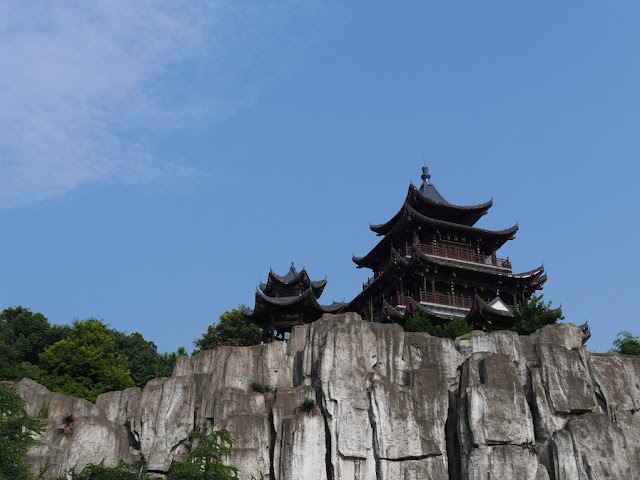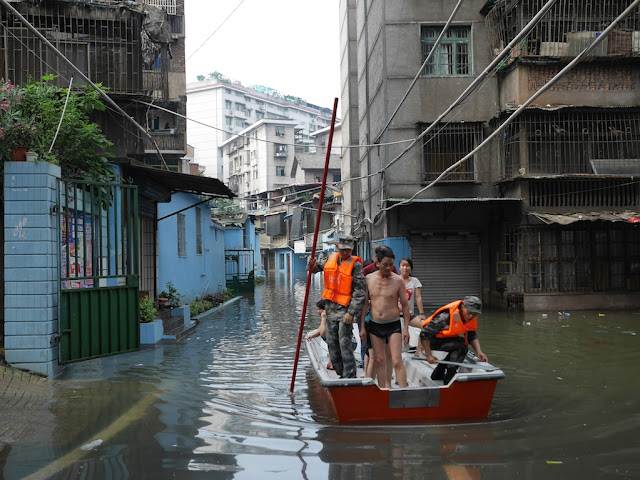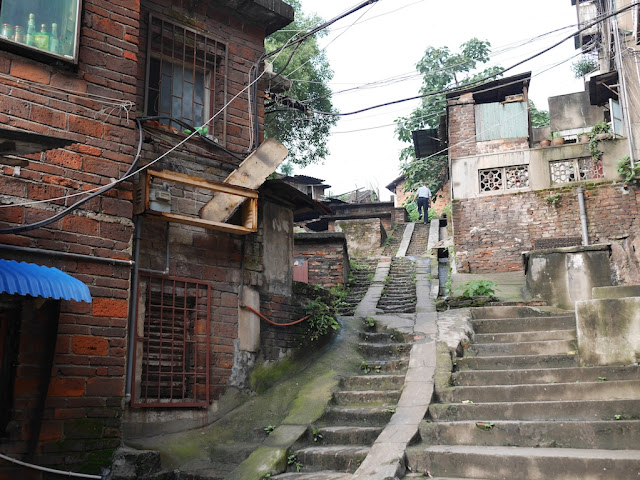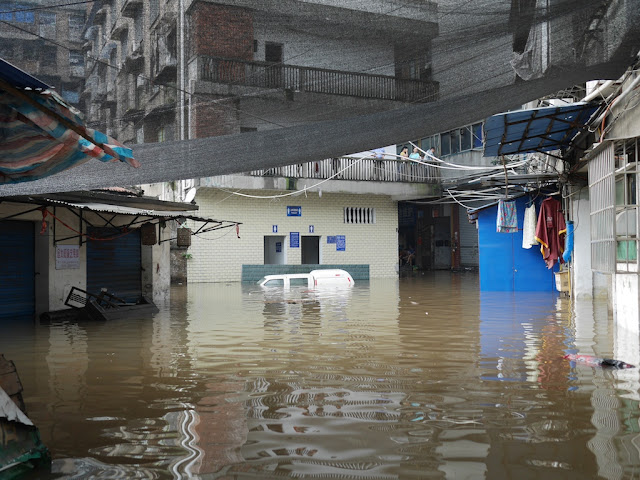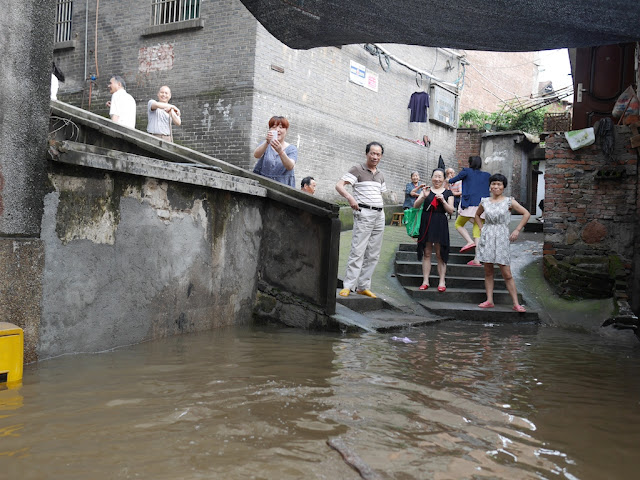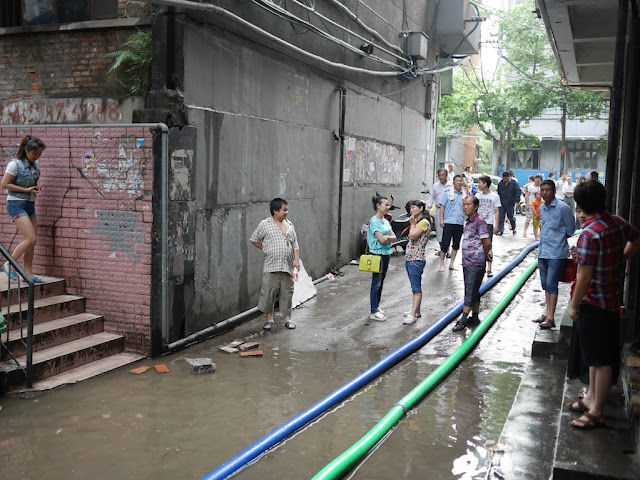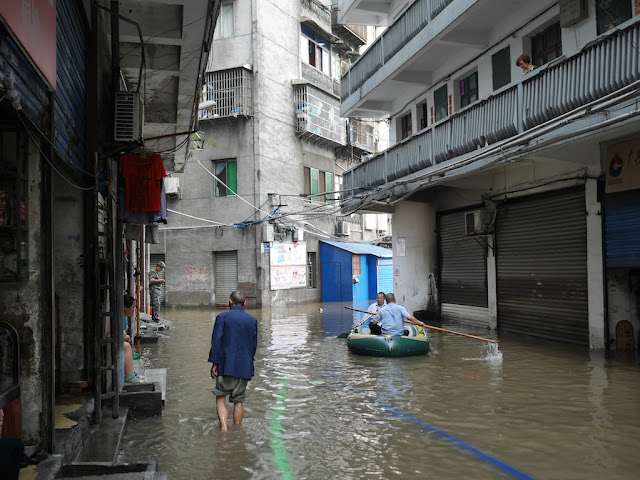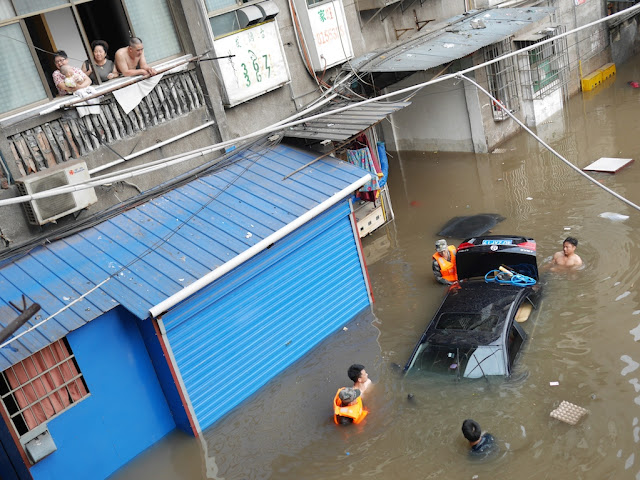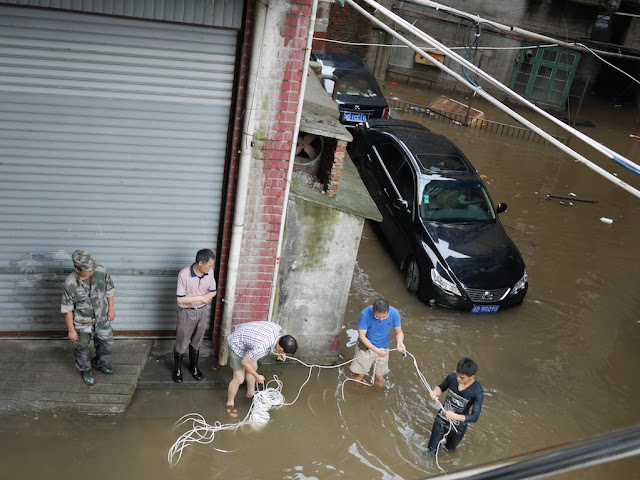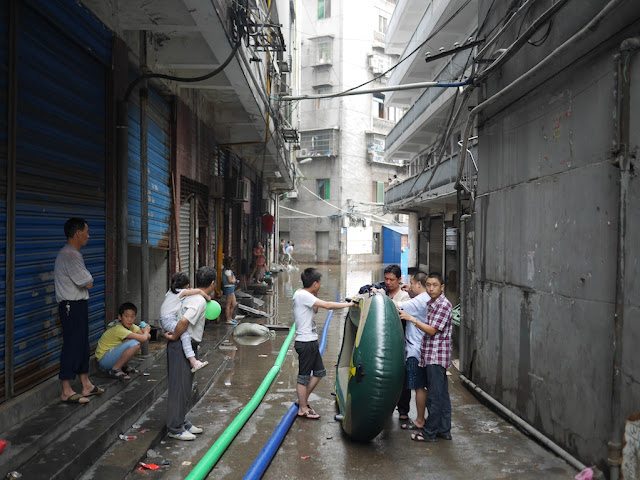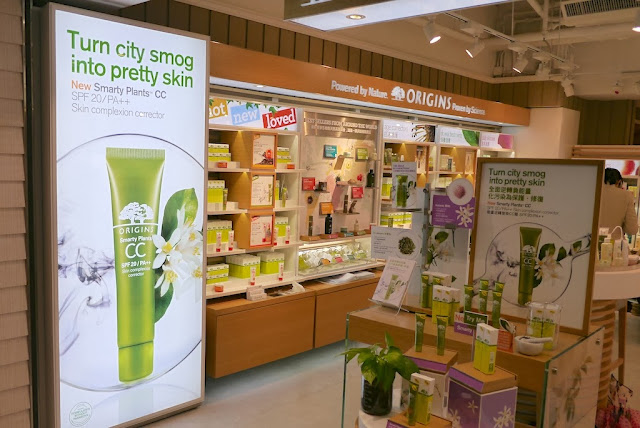Showing posts with label Environment. Show all posts
Showing posts with label Environment. Show all posts
Sunday, March 29, 2015
Saturday, March 28, 2015
A Blue Sky in Zhongshan
Posted by
Brian Glucroft
at
11:47 PM
Today Zhongshan had a blueish sky.
It didn't mean Zhongshan's air quality was "good", but the air was significantly better than when I was deceived by a similarly blue sky in Shanghai.
 |
| Watch tower near the former residence of Sun Yat-sen in Cuiheng, Zhongshan |
It didn't mean Zhongshan's air quality was "good", but the air was significantly better than when I was deceived by a similarly blue sky in Shanghai.
Sunday, March 22, 2015
A Drop of World Water Day From Zhongshan, China
Posted by
Brian Glucroft
at
11:05 PM
Yesterday at a blt supermarket in Zhongshan, China, I was reminded that today, March 22, is World Water Day.
Like a recent promotion in Zhongshan on International Women's Day, I question whether it appropriately reflects the day's spirit. A sale of relatively expensive waters from around the world on a day partly focused on finding ways more people can have access to any sort of safe water doesn't make a whole lot of sense to me. But I guess I shouldn't complain. I visited this particular supermarket specifically due to its unusual-for-Zhongshan selection of carbonated water and saved a few RMB.
Although carbonated water is a treat for me here, in Zhongshan I always drink bottled water. I wouldn't feel safe regularly drinking tap water in China.
Finding clear and reliable numbers on China's water safety can be challenging. For example, although a 2014 report by the World Health Organization and Unicef indicates China has made notable strides in the number of people with access to improved drinking sources, this is largely based on the assumption that having piped water on premises is better. The report doesn't address whether the tap water in China is actually safe. Even by China's own standards, though, much of its water is bad. Incidents of severe water contamination are obviously not positive signs and some experts are highly suspicious of tap water. Other experts argue that China's approach to improving water access and water quality largely through a "infrastructure-focused approach" is misguided and should instead "focus on cleaning water sources and recycling water".
When I wonder about the reliability of the bottled water I drink and the amount of tap water I have ingested indirectly through prepared foods, I am not sure how much I have accomplished. One of the things I enjoy during my trips to the U.S. is drinking and using water straight from the tap without worry. This is one respect where I would say most Americans don't appreciate how good they have it.
For more about something that is so important yet easy for some to take for granted, see Tariq Khokhar's "5 reasons why water is key to sustainable development" and David Sim's "World Water Day 2015: Photos to make you think twice about wasting this precious resource". The latter includes a number of striking images from China and elsewhere providing more reason to appreciate regular access to safe water, especially if it as close as the kitchen sink.
Like a recent promotion in Zhongshan on International Women's Day, I question whether it appropriately reflects the day's spirit. A sale of relatively expensive waters from around the world on a day partly focused on finding ways more people can have access to any sort of safe water doesn't make a whole lot of sense to me. But I guess I shouldn't complain. I visited this particular supermarket specifically due to its unusual-for-Zhongshan selection of carbonated water and saved a few RMB.
Although carbonated water is a treat for me here, in Zhongshan I always drink bottled water. I wouldn't feel safe regularly drinking tap water in China.
Finding clear and reliable numbers on China's water safety can be challenging. For example, although a 2014 report by the World Health Organization and Unicef indicates China has made notable strides in the number of people with access to improved drinking sources, this is largely based on the assumption that having piped water on premises is better. The report doesn't address whether the tap water in China is actually safe. Even by China's own standards, though, much of its water is bad. Incidents of severe water contamination are obviously not positive signs and some experts are highly suspicious of tap water. Other experts argue that China's approach to improving water access and water quality largely through a "infrastructure-focused approach" is misguided and should instead "focus on cleaning water sources and recycling water".
When I wonder about the reliability of the bottled water I drink and the amount of tap water I have ingested indirectly through prepared foods, I am not sure how much I have accomplished. One of the things I enjoy during my trips to the U.S. is drinking and using water straight from the tap without worry. This is one respect where I would say most Americans don't appreciate how good they have it.
For more about something that is so important yet easy for some to take for granted, see Tariq Khokhar's "5 reasons why water is key to sustainable development" and David Sim's "World Water Day 2015: Photos to make you think twice about wasting this precious resource". The latter includes a number of striking images from China and elsewhere providing more reason to appreciate regular access to safe water, especially if it as close as the kitchen sink.
Tuesday, March 10, 2015
Fang Tang's Caricature World at the Zhongshan Cartoon Museum
Posted by
Brian Glucroft
at
11:52 PM
 |
| The Zhongshan Cartoon Museum (中山漫画馆) |
The Zhongshan Cartoon Museum (website in Chinese) opened just over two years ago at scenic Yixian Lake Park in Zhongshan, Guangdong. The Chinese characters "漫画" (mànhuà) in the museum's name are translated into English as "cartoon". But in a different context on a sign introducing a collection of pieces by Fang Tang (方唐), the characters are translated as "caricature", which captures the spirit of his work displayed there.
Fang Tang, formerly known as Chen Shubin, was born in Zhongshan in 1938 and has achieved national recognition (source in Chinese). According to the Zhongshan Daily Overseas Edition, Fang donated a number of his pieces to the museum because he felt it was a better option than them becoming "rubbish" after he dies. As a whole, I considered Fang's works to be the most striking examples in the museum, in large part due to the topics they covered.
Below are photographs of six examples of his work along with their titles. I would typically take a pass on translating artwork titles, especially without consulting the artist. However, for the sake of providing some context, I gave it a shot, erring on the simplistic side. Titles in the original Chinese are included as well, and dates are listed when possible.
With the exception of "Henpecked Disease", I would not have been surprised to see the below examples as editorial cartoons in an American publication, although a slightly different meaning could have been intended or interpreted in some cases. The pieces provide a taste not only of what Fang wanted to creatively express but also of what he has been allowed to express in China.
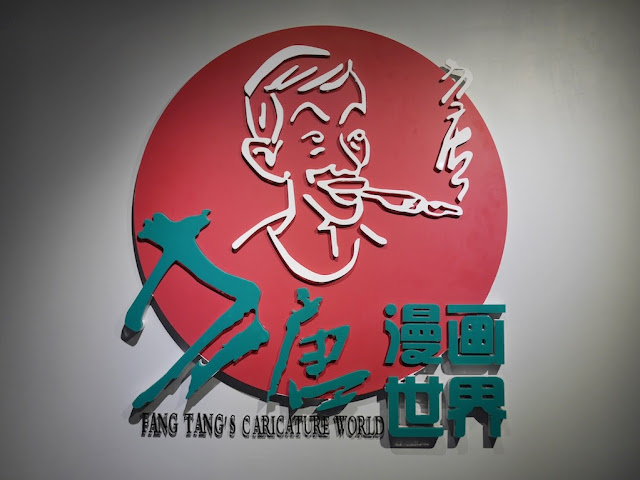 |
| Sign introducing the collection |
 |
| Security — 安全 (2003) |
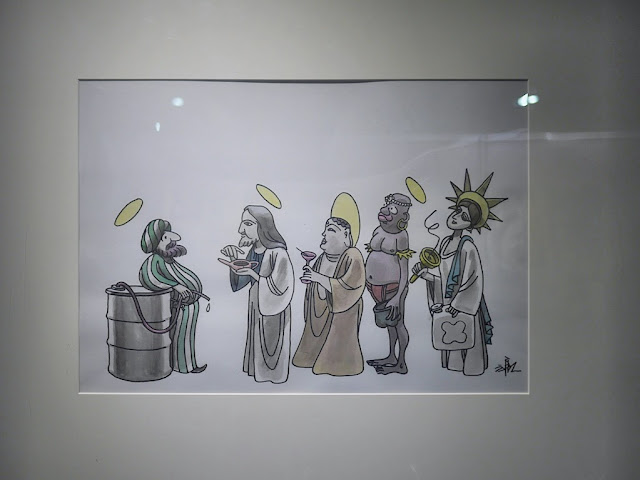 |
| Give a Bit of Oil — 给点油吧 (1981) |
 |
| Recollecting — 回想 (1986) |
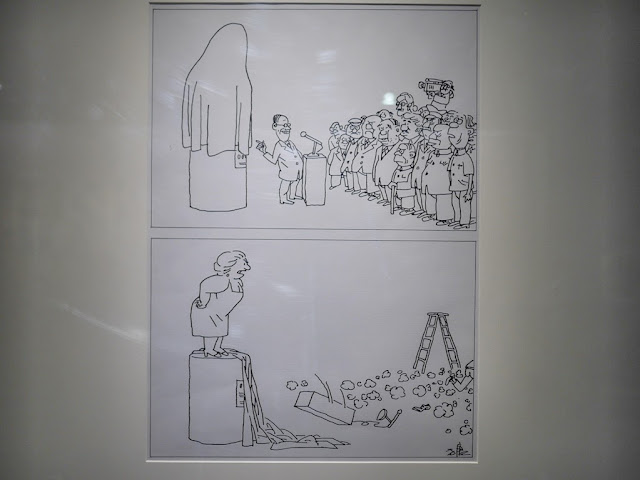 |
| Henpecked Disease — 惧内症 (1985) |
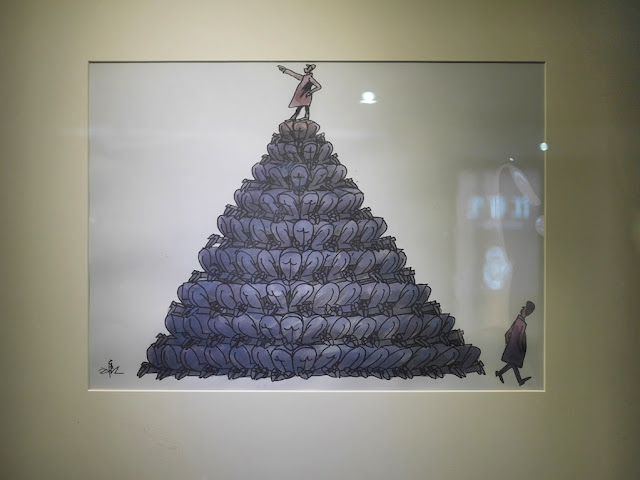 |
| Worship — 崇拜 |
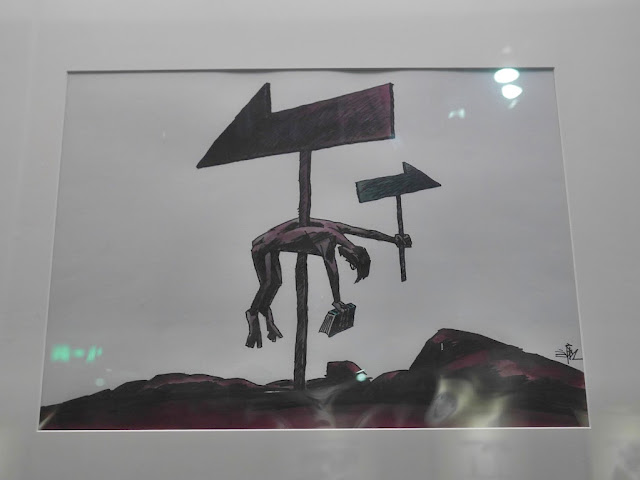 |
| Conviction — 信仰 |
Monday, January 19, 2015
Sunday, January 18, 2015
Another Smoggy View in Chongqing
Posted by
Brian Glucroft
at
11:58 PM
Perhaps I shouldn't have left the previous post, which was about a coat's timely message and Chongqing's temperatures, somewhat hanging with a comment about bad air pollution.
I have mentioned Chongqing's air quality before, and probably will do so again, but, to bring a little more closure to the earlier post, here was a view this afternoon from the SML Central Square shopping mall:
The buildings barely visible in the distance are located across the Yangtze River. I can't say to what degree fog may have played a role in the haze, but, even though Chongqing's air quality improved over previous days, it was definitely bad today.
Maybe someday soon I will see a "Make it Fresh" coat.
I have mentioned Chongqing's air quality before, and probably will do so again, but, to bring a little more closure to the earlier post, here was a view this afternoon from the SML Central Square shopping mall:
The buildings barely visible in the distance are located across the Yangtze River. I can't say to what degree fog may have played a role in the haze, but, even though Chongqing's air quality improved over previous days, it was definitely bad today.
Maybe someday soon I will see a "Make it Fresh" coat.
Sunday, January 11, 2015
Very Unhealthy Whatever the Floor
Posted by
Brian Glucroft
at
11:41 PM
What "Very Unhealthy" air looked like today from the 35th floor of a building in Shanghai's Xujiahui district:
"Hazardous" levels were reached a few hours later.
A few people wore face masks. Most did not. Some had a smoke.
"Hazardous" levels were reached a few hours later.
A few people wore face masks. Most did not. Some had a smoke.
Thursday, December 4, 2014
Yellow Leaves, Leafblowers, and a Street Cleaning Truck
Posted by
Brian Glucroft
at
1:46 AM
One day after I mentioned the fake indoor fall foliage at a mall in Shanghai, of course there were many leaves on the ground in Shanghai due to strong winds. The outdoor real leaves weren't as colorful though.
I would say most tree leaves in Shanghai are still greenish, but brown leaves on some trees are easy to find. And gingko tree leaves in particular have taken on a yellow hue.
More leaves have fallen during the past week or so, which in turn leads to a desire in some to remove the leaves or encourage them to rest elsewhere. This past weekend I saw someone struck by this urge (or perhaps paid by someone else struck by this urge) using a piece of technology which made me think of James Fallows. His feelings regarding leafblowers are in part captured with a label he used to categorize a few posts about them: "Leafblower Menace".
So I sent him a photo of a leafblower in action on Changping Road in Shanghai. I also sent him photos of people I saw later that afternoon on the same road using more traditional and quieter leaf clearing methods. You can see the photos and few thoughts about them in his new post "China Catches Up".
The people in the photos were primarily concerned about cleaning the sidewalk when I saw them. But, yet again on Changping Road, yesterday I saw technology specifically designed for cleaning the street.
The slogan on the side of the street cleaning truck suggests to me that at least some people believe the truck represents progress for Shanghai's Jing'an district. And I have seen far many more street cleaning trucks than leafblowers in China.
Perhaps it is a positive sign I haven't seen any leafblowers with similar slogans.
I would say most tree leaves in Shanghai are still greenish, but brown leaves on some trees are easy to find. And gingko tree leaves in particular have taken on a yellow hue.
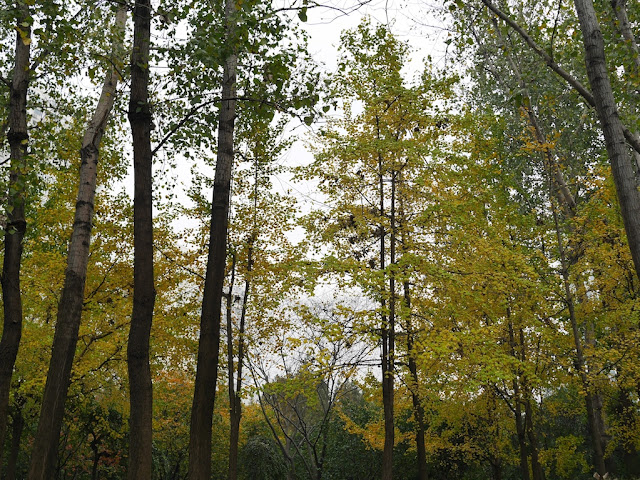 |
| Yanzhong Green Space (Square Park) |
More leaves have fallen during the past week or so, which in turn leads to a desire in some to remove the leaves or encourage them to rest elsewhere. This past weekend I saw someone struck by this urge (or perhaps paid by someone else struck by this urge) using a piece of technology which made me think of James Fallows. His feelings regarding leafblowers are in part captured with a label he used to categorize a few posts about them: "Leafblower Menace".
So I sent him a photo of a leafblower in action on Changping Road in Shanghai. I also sent him photos of people I saw later that afternoon on the same road using more traditional and quieter leaf clearing methods. You can see the photos and few thoughts about them in his new post "China Catches Up".
The people in the photos were primarily concerned about cleaning the sidewalk when I saw them. But, yet again on Changping Road, yesterday I saw technology specifically designed for cleaning the street.
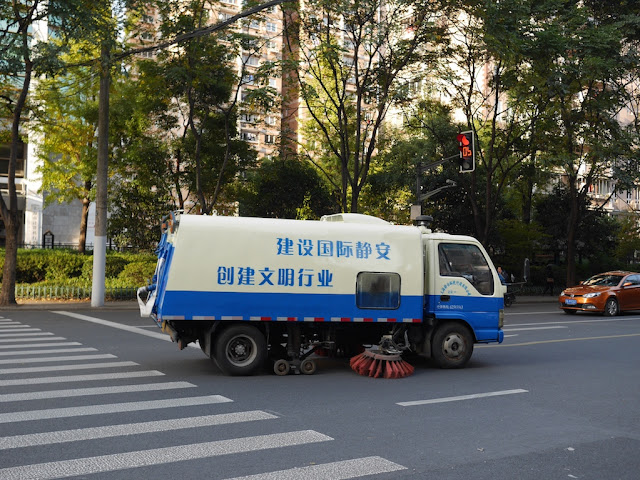 |
| Fortunately for me, no water sprayed out. |
The slogan on the side of the street cleaning truck suggests to me that at least some people believe the truck represents progress for Shanghai's Jing'an district. And I have seen far many more street cleaning trucks than leafblowers in China.
Perhaps it is a positive sign I haven't seen any leafblowers with similar slogans.
Sunday, November 30, 2014
Similarities of a Polluted Beijing and a Slowed Google
Posted by
Brian Glucroft
at
12:51 PM
Yesterday, I saw Bill Bishop's photo of Beijing:
Unsurprisingly, at the same time Beijing's air was reported as "hazardous".
Also at the same time, although my internet connection speed was good for regular access to China-based websites, it was extremely slow through the VPN I use to access blocked websites such as Twitter and Google. Here is what Google looked like for at least a minute when I tried to search for images of Beijing:
In this case, the grey placeholders for yet-to-load images seemed especially fitting. They didn't look very different from Bishop's photo or others of Beijing in heavy smog. Pollution blocking light makes one type of image common. Censorship blocking information helps make the other common for me. The visual similarity may be a coincidence, but once again there was a bit of harmony involving China's air.
Can you find the 330m tall skyscraper 2 blocks away? The view from my beijing apartment now pic.twitter.com/lqRfdzBGCS
— Bill Bishop (@niubi) November 29, 2014
Unsurprisingly, at the same time Beijing's air was reported as "hazardous".
Also at the same time, although my internet connection speed was good for regular access to China-based websites, it was extremely slow through the VPN I use to access blocked websites such as Twitter and Google. Here is what Google looked like for at least a minute when I tried to search for images of Beijing:
In this case, the grey placeholders for yet-to-load images seemed especially fitting. They didn't look very different from Bishop's photo or others of Beijing in heavy smog. Pollution blocking light makes one type of image common. Censorship blocking information helps make the other common for me. The visual similarity may be a coincidence, but once again there was a bit of harmony involving China's air.
Tuesday, November 18, 2014
Harmonious Chinese Air
Posted by
Brian Glucroft
at
11:58 PM
Early this afternoon I noticed an especially harmonious moment in China. U.S. State Department facilities in Beijing, Shanghai, Guangzhou, and Chengdu reported nearly identical "unhealthy" air quality readings at 1:00 p.m.: 154, 153, 156, and 154, respectively.
A 190 reading from Shengyang was less harmonious, though still in the "unhealthy" category.
My experiences of days with obviously bad air in each of these cities easily come to mind. I am also reminded of similar days in many other Chinese cities. Sometimes I expected it, such as in Shijiazhuang which I knew was in a region with many coal-based power plants and industries. Sometimes I did not, such as in Liuzhou which is set in the midst of incredible natural scenery. Now that hourly and daily information like the above is available to check, I wonder how many times in the past a blueish sky tricked me into thinking the day's air wasn't so bad. In other words, the overall air pollution was probably worse than I thought. And I had already thought it was pretty bad.
The above readings are just a snapshot of ever-changing pollution levels from single locations in only the few Chinese cities covered by the U.S. State Department. Yet their momentary similarity despite coming from very different geographic regions is at least symbolic of the fact that air pollution is a widespread problem in China—presumably not what the Chinese government has in mind when it mentions "harmony". Although Beijing may receive the most attention, avoiding it or even all of the above cities is not enough to have a good chance of finding regularly clean air there. You could even find worse.
11-18-2014 13:00; PM2.5; 61.0; 154; Unhealthy (at 24-hour exposure at this level)
— BeijingAir (@BeijingAir) November 18, 2014
11-18-2014 13:00; PM2.5; 60.0; 153; Unhealthy (at 24-hour exposure at this level)
— Con Gen ShanghaiAir (@CGShanghaiAir) November 18, 2014
11-18-2014 13:00; PM2.5; 65.0; 156; Unhealthy (at 24-hour exposure at this level)
— GuangzhouAir (@Guangzhou_Air) November 18, 2014
11-18-2014 13:00; PM2.5; 62.0; 154; Unhealthy (at 24-hour exposure at this level)
— CGChengduAir (@CGChengduAir) November 18, 2014
A 190 reading from Shengyang was less harmonious, though still in the "unhealthy" category.
11-18-2014 13:00; PM2.5; 132.0; 190; Unhealthy (at 24-hour exposure at this level)
— ConGenShenyang (@Shenyang_Air) November 18, 2014
My experiences of days with obviously bad air in each of these cities easily come to mind. I am also reminded of similar days in many other Chinese cities. Sometimes I expected it, such as in Shijiazhuang which I knew was in a region with many coal-based power plants and industries. Sometimes I did not, such as in Liuzhou which is set in the midst of incredible natural scenery. Now that hourly and daily information like the above is available to check, I wonder how many times in the past a blueish sky tricked me into thinking the day's air wasn't so bad. In other words, the overall air pollution was probably worse than I thought. And I had already thought it was pretty bad.
The above readings are just a snapshot of ever-changing pollution levels from single locations in only the few Chinese cities covered by the U.S. State Department. Yet their momentary similarity despite coming from very different geographic regions is at least symbolic of the fact that air pollution is a widespread problem in China—presumably not what the Chinese government has in mind when it mentions "harmony". Although Beijing may receive the most attention, avoiding it or even all of the above cities is not enough to have a good chance of finding regularly clean air there. You could even find worse.
A Blue Shanghai Sky's Blues
Posted by
Brian Glucroft
at
11:53 AM
When I looked up while walking outside this morning in Shanghai, the blueish sky and light patches of white clouds encouraged me.
But like a day when I was "deceived by the sky" in Beijing, I learned the air quality was nothing to cheer:
For me, it's a reminder that, although they receive the most attention, the more obviously bad air days are not the only ones to be concerned about. More on this theme later.
But like a day when I was "deceived by the sky" in Beijing, I learned the air quality was nothing to cheer:
11-18-2014 10:00; PM2.5; 78.0; 163; Unhealthy (at 24-hour exposure at this level)
— Con Gen ShanghaiAir (@CGShanghaiAir) November 18, 2014
In this case, Shanghai residents can't even say "at least it's better than Beijing", where instead of 163 the air quality index at the same time was "only" 115—still far from good.For me, it's a reminder that, although they receive the most attention, the more obviously bad air days are not the only ones to be concerned about. More on this theme later.
Saturday, November 8, 2014
A Walk Down Pudong Avenue in a Smoggy Shanghai
Posted by
Brian Glucroft
at
9:17 PM
Fate or chance brought me to Pudong Avenue in Shanghai late Thursday afternoon, and I decided to take a long walk to my next destination. Fate, chance, or "progress", also brought me and many others easily visible air pollution. Below are several photos I took as the sun descended while I walked down Pudong Avenue towards the Lujiazui financial district. Regardless of the prominence of Shanghai's iconic towers in front of me, the pollution seemed to stay the same—once again, a reminder of what is shared with everyone.
Saturday, October 11, 2014
Contrasting Air
Posted by
Brian Glucroft
at
1:13 PM
Recently in China's capital:
Recently in an American small town:

Today I was in the latter location and did not have to wear a mask in Beijing due to an "airpocalypse" yet again. As I travel from region to region in the U.S. during a several-week trip, I have found the relatively clean air — something which once seemed unremarkable — to be so remarkable. And I appreciate it all the more.
This is Beijing, in the morning of today, October 11, 2014 pic.twitter.com/l0TpbWIEGv
— People's Daily,China (@PDChina) October 11, 2014
People's Daily headquarter yesterday and today. Netizens: "it was launched into space?" pic.twitter.com/Sb17b5aMHv
— Offbeat China (@OffbeatChina) October 11, 2014
UFO in Beijing? No, it's smog shrouded tower http://t.co/piLeAMFEZz UFO certainly can't find Beijing pic.twitter.com/67VHD7svnW
— Patrick Zuo (@P_Zuo) October 10, 2014
Beijing at night: friends and family said their eyes hurt even when they are inside these days in BJ. #pollution pic.twitter.com/eLykGuhrt0
— XQ (@MissXQ) October 10, 2014
Beijing government proclaims "Lets All Live in Sepia!" initiative an unqualified success: http://t.co/mJaU6iIrz6 pic.twitter.com/Quqz6Rp4vv
— Chris Buckley 储百亮 (@ChuBailiang) October 11, 2014
Even if Brazil does play Argentina in Beijing today, no one will see it. I can't see the ground from 12th flr pic.twitter.com/XiEB4KgHI8
— malcolmmoore (@MalcolmMoore) October 10, 2014
Another day in paradise pic.twitter.com/3nytqFqq1i
— Scott Murdoch (@murdochsj) October 11, 2014
Recently in an American small town:

Today I was in the latter location and did not have to wear a mask in Beijing due to an "airpocalypse" yet again. As I travel from region to region in the U.S. during a several-week trip, I have found the relatively clean air — something which once seemed unremarkable — to be so remarkable. And I appreciate it all the more.
Thursday, September 25, 2014
A Colorful Sight in Taipei
Posted by
Brian Glucroft
at
11:40 PM
Yesterday while I walked around outside in a drizzle, I turned around and noticed something which surprised me.
The rainbow didn't strike me as remarkable except in one way—it had been a while since I had last seen a rainbow. In a post displaying the artificial rainbow I saw in Hengyang, I mentioned I couldn't remember having ever seen a genuine rainbow in China and wondered if pollution or tall buildings were significant factors. I now see that 15 years ago two scientists presented hypotheses for how pollution may have caused a decrease of rainbow sightings in Seoul, South Korea, but they don't claim to have an answer.
Whatever the case, I appreciated the rainbow.
The rainbow didn't strike me as remarkable except in one way—it had been a while since I had last seen a rainbow. In a post displaying the artificial rainbow I saw in Hengyang, I mentioned I couldn't remember having ever seen a genuine rainbow in China and wondered if pollution or tall buildings were significant factors. I now see that 15 years ago two scientists presented hypotheses for how pollution may have caused a decrease of rainbow sightings in Seoul, South Korea, but they don't claim to have an answer.
Whatever the case, I appreciated the rainbow.
Wednesday, July 2, 2014
More Blue Skies In Hengyang
Posted by
Brian Glucroft
at
11:59 PM
Blue skies in Hengyang have not been frequent during my time here, but fortunately today was another exception.
More about blue skies (or lack thereof) elsewhere in China, mobile phone sales, and other topics soon . . .
More about blue skies (or lack thereof) elsewhere in China, mobile phone sales, and other topics soon . . .
Saturday, June 21, 2014
A Hengyang Blue Sky
Posted by
Brian Glucroft
at
9:40 PM
Based on my time in Hengyang, Hunan, I would not say it's the best place to visit if you are seeking clean air. One day in particular last week offered clearer skies and better than average air, though. The air wasn't perfect and the effects of smog could be seen in the distance, but the sky above was striking nonetheless. So I was able to enjoy a blue sky accompanied by an artificial rainbow . . .
. . . and the Huiyan Pavilion (回雁阁) on Huiyan Peak.
On a related note, I don't remember having ever seen a real rainbow in China, which strikes me as odd. I wonder whether tall buildings obstructing the view or smog likely plays a larger role. Maybe someone can tell me what it means.
. . . and the Huiyan Pavilion (回雁阁) on Huiyan Peak.
On a related note, I don't remember having ever seen a real rainbow in China, which strikes me as odd. I wonder whether tall buildings obstructing the view or smog likely plays a larger role. Maybe someone can tell me what it means.
Tuesday, June 3, 2014
PLA Soldiers, Chengguan, and a Raft Ride During a Flooded Dragon Boat Festival in Hengyang
Posted by
Brian Glucroft
at
1:48 AM
Last night the rain was especially heavy in Hengyang, Hunan province. When I set out this afternoon, most seemed relatively normal in the central urban area where I have spent most of my time, like last week when the Xiang River flooded a pedestrian area.
However, while walking down a street not far from Yueping Park, I looked down an alley I had not passed before named Yudetang (余德堂) and saw something rather unexpected.
During a confused split second I wondered whether I was looking at a canal, but I quickly realized that an area in a hilly section of Hengyang had flooded. The water came up to the waist of one man of average height who jumped into the water further down the alley. While I was there, another man said to me that surely the U.S. would not have problems like this. I told him that sometimes the U.S. experiences flooding that wouldn't look very different.
I soon saw the arrival of a boat with residents guided by two People's Liberation Army soldiers wearing their urban camouflage uniforms.
I then headed back to the main road and soon found nearby an intriguing route up a hill.
After reaching the top and going down a different set of stairs, I soon found myself facing another flooded area.
A group of people gathered near the edge of the flood appeared bewildered to see me, and we were soon having a friendly conversation. They said the area has flooded previously but never before had the water risen so high.
Soon, a raft passed nearby, and after a bubble of activity several people hailed it. To my surprise it was not for themselves. Instead, they excitedly told me I could board it. I had no need for a boat ride and was looking forward to exploring another set of stairs, but a woman encouraged me to get on the boat and told me I could take more photos. I then noticed that although there were no soldiers aboard, one of the rowers was a chengguan, a law enforcement officer for urban administrative regulations and the "least-loved public official" in China. I really didn't want to be getting in the way, but the chengguan insisted, in a friendly manner, that I come aboard.
So I departed my new friends. Several of them looked rather amused.
During the middle of the trip, I saw a group of men trying to move a car.
And after a 5 minute journey, I disembarked at an area with its own set of onlookers.
My thanking the chengguan caused a bit of laughter. As the chenguan rowed away, I pondered the fact that the end of my raft ride had been filmed by a news crew from Hunan TV.
I then climbed some stairs to a long balcony and backtracked a bit. Progress of some sort had been made with the car in deeper waters although debate erupted over what to do next.
There were activities elsewhere, although I didn't stick around long enough to figure out what they had planned.
For others, there was nothing to do but watch.
Eventually, I decided to depart, and I took one last look back.
As I approached a main street, I saw a street sign indicating I was now at the opposite end of the same alley where I first noticed the flooding.
A local news report (in Chinese) confirms what the residents told me--this is not the area's first flooding.
Although the boats are somewhat fitting in an ironic manner, this certainly was not how I expected to spend the Dragon Boat Festival today in China. I am sure others felt the same. It was a somewhat surreal experience for me at times, but mostly I felt bad for the residents who have to deal with the flooding. Hopefully next year's holiday is more festive for them and all boats are far from their street.
However, while walking down a street not far from Yueping Park, I looked down an alley I had not passed before named Yudetang (余德堂) and saw something rather unexpected.
During a confused split second I wondered whether I was looking at a canal, but I quickly realized that an area in a hilly section of Hengyang had flooded. The water came up to the waist of one man of average height who jumped into the water further down the alley. While I was there, another man said to me that surely the U.S. would not have problems like this. I told him that sometimes the U.S. experiences flooding that wouldn't look very different.
I soon saw the arrival of a boat with residents guided by two People's Liberation Army soldiers wearing their urban camouflage uniforms.
I then headed back to the main road and soon found nearby an intriguing route up a hill.
After reaching the top and going down a different set of stairs, I soon found myself facing another flooded area.
A group of people gathered near the edge of the flood appeared bewildered to see me, and we were soon having a friendly conversation. They said the area has flooded previously but never before had the water risen so high.
Soon, a raft passed nearby, and after a bubble of activity several people hailed it. To my surprise it was not for themselves. Instead, they excitedly told me I could board it. I had no need for a boat ride and was looking forward to exploring another set of stairs, but a woman encouraged me to get on the boat and told me I could take more photos. I then noticed that although there were no soldiers aboard, one of the rowers was a chengguan, a law enforcement officer for urban administrative regulations and the "least-loved public official" in China. I really didn't want to be getting in the way, but the chengguan insisted, in a friendly manner, that I come aboard.
So I departed my new friends. Several of them looked rather amused.
During the middle of the trip, I saw a group of men trying to move a car.
And after a 5 minute journey, I disembarked at an area with its own set of onlookers.
My thanking the chengguan caused a bit of laughter. As the chenguan rowed away, I pondered the fact that the end of my raft ride had been filmed by a news crew from Hunan TV.
I then climbed some stairs to a long balcony and backtracked a bit. Progress of some sort had been made with the car in deeper waters although debate erupted over what to do next.
There were activities elsewhere, although I didn't stick around long enough to figure out what they had planned.
For others, there was nothing to do but watch.
Eventually, I decided to depart, and I took one last look back.
As I approached a main street, I saw a street sign indicating I was now at the opposite end of the same alley where I first noticed the flooding.
A local news report (in Chinese) confirms what the residents told me--this is not the area's first flooding.
Although the boats are somewhat fitting in an ironic manner, this certainly was not how I expected to spend the Dragon Boat Festival today in China. I am sure others felt the same. It was a somewhat surreal experience for me at times, but mostly I felt bad for the residents who have to deal with the flooding. Hopefully next year's holiday is more festive for them and all boats are far from their street.
Tuesday, May 27, 2014
Flooding and Cleanup Along the Xiang River in Hengyang
Posted by
Brian Glucroft
at
10:18 PM
Flooding caused by recent heavy rains has led to at least 37 deaths in southern China. The Wall Street Journal posted a slide show showing some of the rain's impact in Hunan, Jiangxi, Guangdong, and Fujian provinces.
The rain has been heavy at times in Hengyang, Hunan province, but I haven't noticed anything calamitous in the central urban area where I have spent most of my time. Flooding has been easy to see, though, along the Xiang River (also called the Xiangjiang River).
The river never came close to overflowing the nearby streets in this part of Hengyang, but it did rise high enough to submerge at least one adjacent lower-level pedestrian area. The water has been receding, but this area remains underwater. So instead of this:
... today cleanup operations were underway to remove silt and other debris.
I briefly met part of the cleanup team, and many of them appeared to be proud of their work. One person even asked me to take a group photograph.
They probably don't get as much positive attention as they should. But their work will mean the flooding's effects here will soon be forgotten, and people will be able to once again enjoy not working next to the river.
The rain has been heavy at times in Hengyang, Hunan province, but I haven't noticed anything calamitous in the central urban area where I have spent most of my time. Flooding has been easy to see, though, along the Xiang River (also called the Xiangjiang River).
 |
| The stone railing was completely submerged at one point. |
The river never came close to overflowing the nearby streets in this part of Hengyang, but it did rise high enough to submerge at least one adjacent lower-level pedestrian area. The water has been receding, but this area remains underwater. So instead of this:
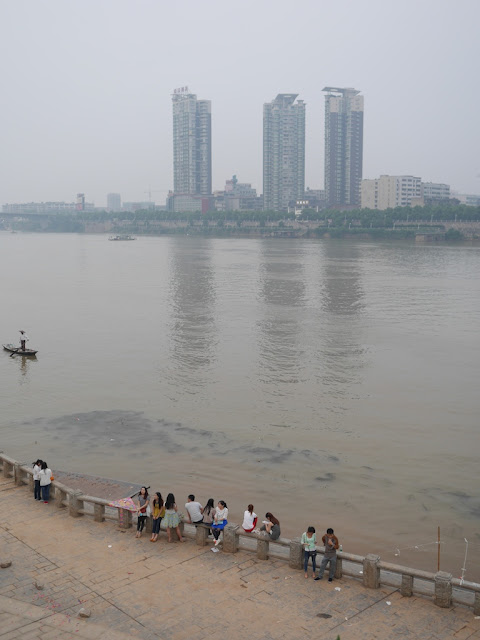 |
| Signs of earlier flooding are evident. |
... today cleanup operations were underway to remove silt and other debris.
 |
| Didn't look easy |
I briefly met part of the cleanup team, and many of them appeared to be proud of their work. One person even asked me to take a group photograph.
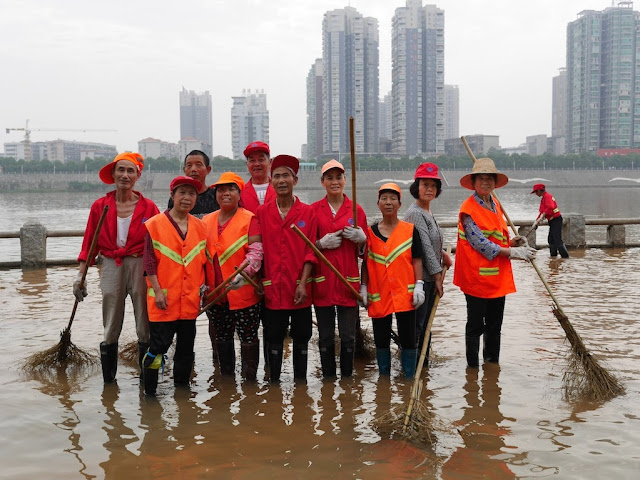 |
| The second woman from the right made the request. |
They probably don't get as much positive attention as they should. But their work will mean the flooding's effects here will soon be forgotten, and people will be able to once again enjoy not working next to the river.
 |
| A more typical scene at the riverside pedestrian area |
Monday, September 23, 2013
An Original Claim About Smog in Hong Kong
Posted by
Brian Glucroft
at
11:18 PM
I previously shared an example of an advertisement in Beijing which included a smog filled scene. In Hong Kong, another city where air pollution is problem, as I walked by a store selling cosmetics made by Origins, a US brand, I saw smog being used in a more explicit manner to promote a product:
The Smarty Plants CC SPF 20 Skin complexion corrector featured in the display is available elsewhere, including the US. On its US website Origins claims that "Our super-smart antioxidant infused formula helps neutralize skin damaging effects of city smog and pollution." Of note, the site does not include the image of smog apparently transforming into flowers and the statement "Turn city smog into pretty skin" that can be found on the Hong Kong website and in the above scene (also seen in material for Malaysia, Singapore, and Taiwan):
As I walked away from the store what I most thought about was not the claim that smog could be turned into pretty skin but instead the implications that the display was a sign of how much pollution has become a part of everyday life in Hong Kong.
And it may also be a sign of how some people are trying to approach pollution pragmatically. Sometimes you just have to make the best out of a situation. As they say, "when life gives you smog, make smog flowers".
The Smarty Plants CC SPF 20 Skin complexion corrector featured in the display is available elsewhere, including the US. On its US website Origins claims that "Our super-smart antioxidant infused formula helps neutralize skin damaging effects of city smog and pollution." Of note, the site does not include the image of smog apparently transforming into flowers and the statement "Turn city smog into pretty skin" that can be found on the Hong Kong website and in the above scene (also seen in material for Malaysia, Singapore, and Taiwan):
As I walked away from the store what I most thought about was not the claim that smog could be turned into pretty skin but instead the implications that the display was a sign of how much pollution has become a part of everyday life in Hong Kong.
And it may also be a sign of how some people are trying to approach pollution pragmatically. Sometimes you just have to make the best out of a situation. As they say, "when life gives you smog, make smog flowers".
Subscribe to:
Posts (Atom)



